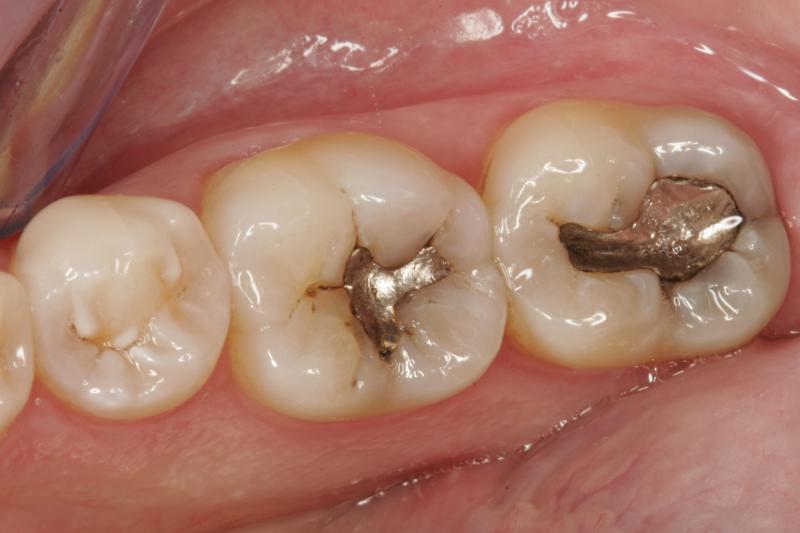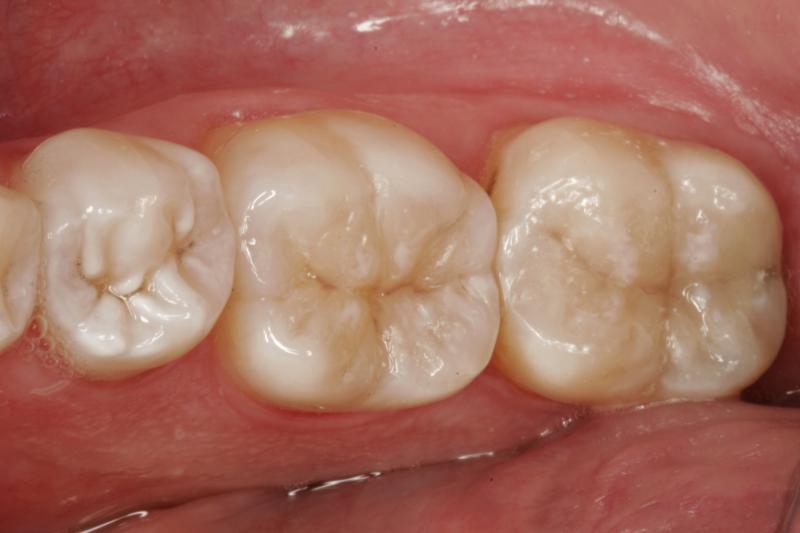Tooth Coloured White Fillings
In the past, teeth were most usually repaired with dental amalgam (mercury) fillings or gold restorations. Thanks to advances in modern dental materials and techniques, teeth can now be restored with a more cosmetic and natural appearance.
There are different types of cosmetic white fillings currently available. The type used will depend on the location of the tooth and the amount of tooth structure that needs to be repaired and replaced.
Following the preparation of the tooth, Dr. Kaviani places the composite in layers, typically using a light specialised to harden each layer. When the process is finished, she will shape the composite to fit the tooth. and finally, the tooth coloured white filling is polished to prevent staining and early wear.
White fillings vs. Silver Fillings
Most individuals understand the importance of proper oral care. They may brush, floss, and take their family to the dentist for regular checkups. However, even the best dental care may not be enough.
Even if you do all you can to prevent cavities, you’re not entirely immune to them. Tooth decay can enter into even a small chip or crack in your enamel. And as we mentioned earlier in this blog-cavities don’t hurt unless the decay reaches your tooth pulp.
However, once you get a cavity, you’re left with one option: getting a filling.
The question is, what type of filling is best for you? Your dentist can choose between silver fillings (amalgams) and resin-based fillings (composite). But you might want to know a bit more about these materials before your next dental visit.
Advantages and Disadvantages
White fillings, or dental composite, refers to tooth-colored resins your dentist can use to fill tooth cavities. This composite resin uses a blend of plastics and fillers such as silica and dimethylglyoxime to quite literally ‘bond’ with the tooth’s surface.There are many advantages to composite fillings including:
- Aesthetics – Unlike silver coloured fillings, composite fillings look just like your natural teeth since the colour can be carefully blended for a seamless finish. This makes them an ideal choice for front teeth which would look very unattractive with a silver filling.
- Stability – A composite filling also requires very little of the tooth structure to be removed for placement which means more of your natural tooth is preserved. Since the filling bonds with the actual tooth, it offers additional stability for a tooth that has already been weakened by decay.
- Insulation – White fillings are not affected by any changes in temperature which occur in your mouth, unlike amalgam fillings which tend to contract and expand, and this protects your tooth from fracture.
- Versatility – Composite resin is very versatile and besides fillings can also be used to repair teeth that are chipped, broken, or badly worn.
- Free from metal – Finally, white fillings do not contain any metal. Some studies have suggested that mercury used in amalgam fillings can pose a threat to your health, although this is not conclusive.


The latest form of white filling is technically called a Composite. It is made up of a composite quartz resin and usually contains some sort of light sensitive agent. These light -cured composites are exceptionally natural looking and most often bonded into place in one appointment. For this reason, they are often referred to as “bonding”.
Tooth coloured fillings can be used in both the front of the mouth as well as in your back teeth. These materials come in a variety of shades so that they will match the colour of your own teeth. Some of these composite materials have been specifically designed to actually withstand the incredible forces you can exert when chewing on your back teeth.
In order to bond a white filling composite to your tooth, it is first necessary to remove the decay, prepare the tooth and then to condition the enamel and dentine. Once conditioned, a thin resin is applied which bonds to the etched surface. The bonding strength of these white fillings is incredibly strong.
With skilled creativity, composites can be used to realistically mimic the colour details and transparency of your tooth and polished to a beautiful shine. White tooth bonding techniques are quite common, Nevertheless only a very few dentists have the artistic inclination needed.
What Are Composite White Fillings?
Tooth-coloured fillings were first introduced in the mid-1960s. Since then, the materials have undergone continual improvements in durability, aesthetics and material handling. The most versatile and widely used tooth-coloured filling today is the composite resin filling. A composite is a material in which filler particles are encased and bound together by a hard matrix material. In this case, a fluid matrix of acrylic is hardened around glass filler particles to form composite resin.
Why not old-fashioned (amalgam) silver fillings?
Amalgam fillings have been used extensively over the past 170 years and still remain a contentious issue. The majority of dental associations around the world maintain that they are safe to use.
However, there are a growing number of dentists and organizations that are concerned about the negative health implications, as well as the impact on the environment.
Due to the unrelenting controversy about the effect of amalgam fillings on systemic health, it is sensible to avoid them, especially as there are such excellent alternative materials available.
Can any dentist carry out composite bonding?
Yes. However, you must note that bonding requires a high level of artistic skill and not all dentists are equally skilled. Some cosmetic dentists will have undertaken extensive postgraduate training in the field of white fillings and dental bonding.
Composite bonding is the art & science of the bonding of tooth coloured restorative material to a tooth or teeth to enhance or improve the shape, form, length or symmetry of the tooth/teeth. It is very effective in closing small to medium gaps between teeth.
Composite bonding is a wholly non-invasive and conservative treatment, the material is tooth coloured and is matched to the patients natural tooth shade.
Alternatives to composite resin
Your choice will depend on the following:
- Size of the area to be restored
- The strength required of the filling material
- Aesthetics
- The desire for a longer lasting restoration.
The most aesthetic and long-lasting alternative to composite tooth-coloured fillings are porcelain inlays or onlays. Inlays are longer lasting and more stain resistant. However, they cost more and require a longer treatment period.

Invisible Fillings
Bonded composite restorations have become the filling material of choice for small to moderate size fillings. The filling “bonds” with your teeth, and because it comes in a variety of tooth-colored shades, it closely matches the appearance of your natural teeth. Most patients prefer bonded fillings because the white color is much less noticeable than the silver amalgam fillings. Bonding fillings can be used on front and back teeth depending on the location and extent of tooth decay. When decay or damage is more extensive, bonded porcelain or gold may be more appropriate.
Bonded composite is less expensive than other restorations and usually can be completed in one visit to our office. However, composite stains more easily and is not as strong as porcelain or metal. If it does break chip, tell your doctor. The bonding can generally be easily patched or repaired in one visit.
How do I take care of composites?
Nutrition
Having a balanced diet will help support a good oral health. Avoid foods that can harm or discolor your teeth, especially those around your composite. If you do have any foods that may break down the enamel, sip some water to help rinse away harmful residue. Staying hydrated is also key to maintaining oral health. Dehydration can lower the level of saliva present in your mouth and reduce the amount of harmful bacteria that is natural washed away.
Oral Hygiene
The British Dental Association suggests brushing your teeth with toothpaste that contains fluoride twice a day. Daily flossing is also encouraged to remove bacteria from between your teeth.
Regular dental visits
The dentist will check to make sure the composite is holding up and there is no further decay around the filling. A thorough cleaning should be done by dental professionals regularly as well to help stop decay and gum disease before they start.
Book an Appointment
Tel; 01772 726932



